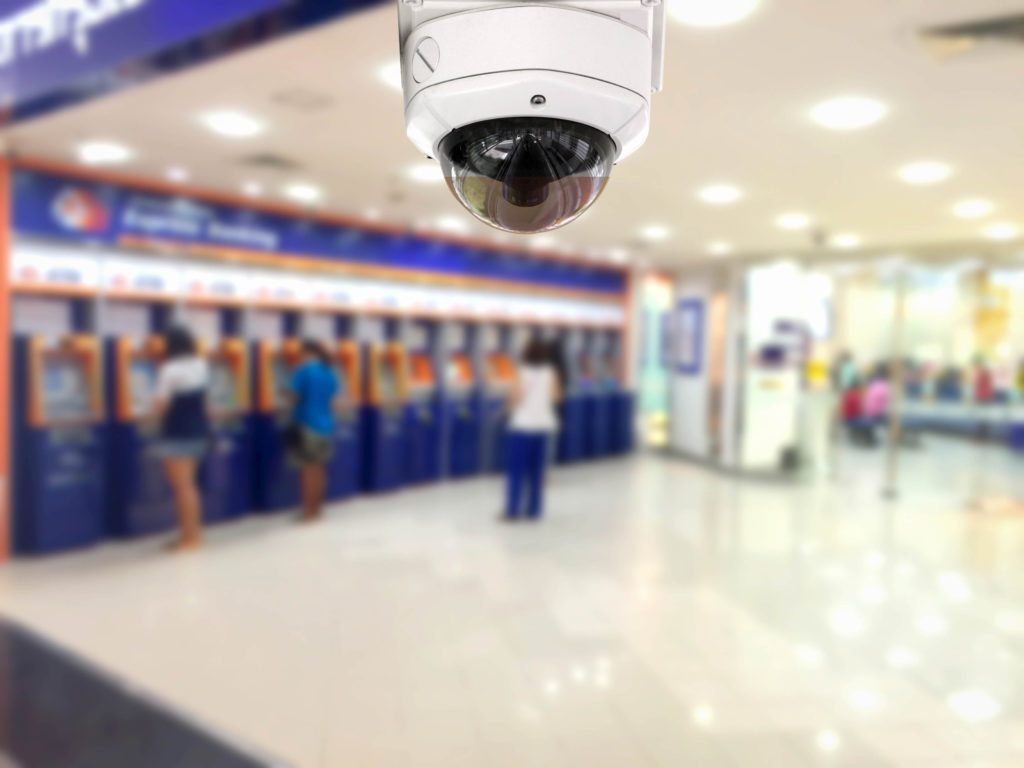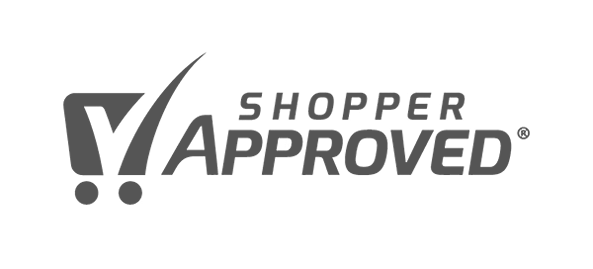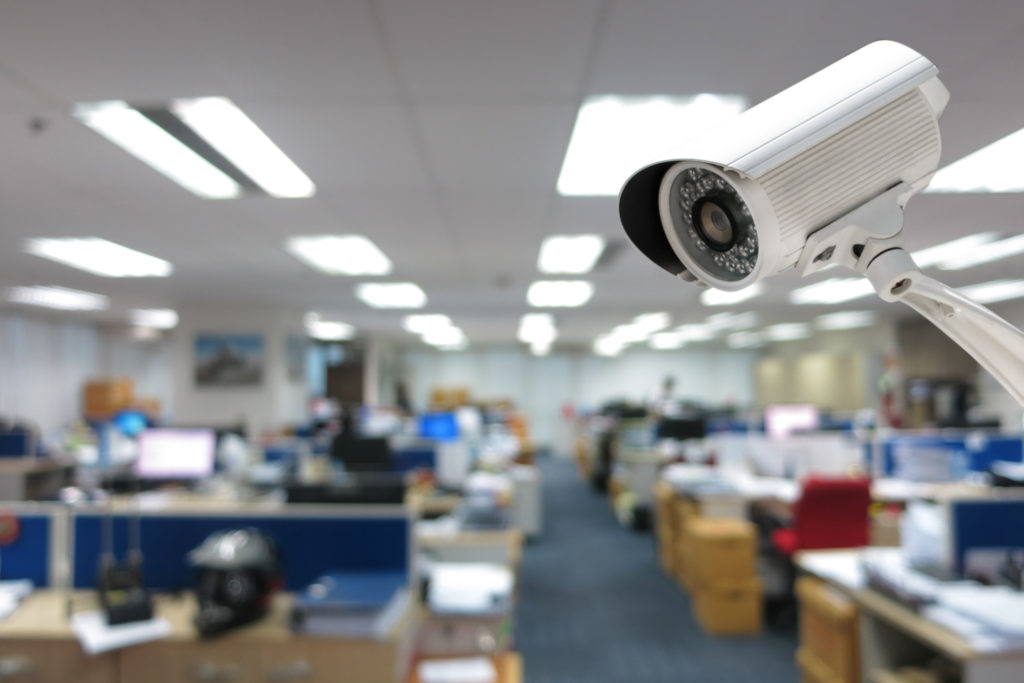Cloud Security and Compliance for Retailers – The Essential Guide
May 26, 2021 in Cloud Video Surveillance, Retail Security, Security Cameras, Video Security and Surveillance BlogRetail businesses face complex security issues that include managing high turnover, theft and loss prevention, and mitigating cybersecurity threats to their network.
One of the most significant challenges for the retail industry is maintaining compliance as required by Payment Card Information (PCI) guidelines to protect and store their customer’s payment information.
All retailers must follow a strict set of mandated regulations and procedures to prevent customer identification and/or payment information from hacking attempts and cyber theft.
Do All Retailers Need to Be PCI Compliant?
PCI Data Security Standard (DSS) compliance is a security standard applicable to every business or organization that processes, stores, or transmits credit cardholder information.

Since 2014, every retailer–from brick and mortar to e-commerce companies that collect and process cardholder data must meet these PCI regulations.
PCI Compliance Mandates
PCI requirements run much deeper than just setting up firewalls – retailers must also meet the 12 conditions outlined in PCI DSS 3.2 to fully address a growing number of threats.
These include:
- Install and maintain a firewall configuration to protect cardholder data
- Do not use vendor-supplied defaults for system passwords and other security parameters
- Protect stored cardholder data
- Encrypt transmission of cardholder data across open, public networks
- Use and regularly update anti-virus software or programs
- Develop and maintain secure systems and applications
- Restrict access to cardholder data by business need to know
- Assign a unique ID to each person with computer access (no super admin passwords)
- Restrict physical access to cardholder data
- Track and monitor all access to network resources and cardholder data
- Regularly test security systems and processes
- Maintain a policy that addresses information security for all personnel
Addressing Operational Challenges to Meet PCI Compliance
Retailers must also establish operational measures to safeguard a customer’s PCI from accidental exposure, misuse, or cyber hacking to remain compliant as well.
Because retail organizations are designed to be process-driven on handling customer transactions, all retail organizations must have a plan and procedures for all employees to follow, preventing sensitive customer information from being exposed and stolen.
This includes compliance measures that address critical areas such as checkout and PoS stations, entrances and exits, storage and management rooms/offices, customer service areas, and inventory management processes.
Retailers are also required to have a robust standardization process in place.
This can include physical access control to limit the number of people with access to critical areas and reporting standards that allow managers to easily track access by an employee and by daypart.
Retailers are encouraged to install video security systems as an additional layer of protection, so they have video records of activity in all locations’ critical areas as part of their overall operational plan to safeguard patient data.
How Do PCI Compliance Regulations Affect A Multi-Site Retail Business?
Maintaining PCI compliance for single-location retail is complex to navigate, which becomes more complicated in a multi-site world.
To make matters more complicated, there are four different levels of compliance which a retailer must follow.
All merchants fall into four groups (this is based upon credit or debit card transaction volume over 12 months). Unfortunately, many multi-site businesses fall into Phase 1, which requires the strictest level of compliance.
For multi-site retailers, managing PCI compliance can cause decision paralysis to questions such as:
- How do I implement PCI compliance?
- Is there an affordable strategy to achieve PCI compliance system-wide?
- How do I sustain PCI compliance in a constantly evolving threat landscape?
This is where the right security system makes all the difference.
Traditional Video Security Systems and PCI
When an on-premise video security system is installed on the same network that houses servers with customer information and credit card information, it must be installed in a way that meets PCI compliance standards, especially when the system is set up for remote viewing access.
To prevent this from occurring, retailers must depend on their IT team to have the knowledge to connect the security system to the network without creating deficiencies in the network infrastructure that could allow unauthorized access.
Typically, the most secure setup is through a VPN, which is usually more complicated to establish and maintain and requires a higher level of vigilance from employees to maintain the integrity of the network by always going through a VPN to get network access.
With a traditional on-premise security system, retailers may not have the network expertise or internal resources to set up a VPN or unknowingly take shortcuts to attach a recorder to their network.
Often the most significant risk is when owners or staff need remote viewing access to the video system.
Unless the system is safeguarded by a VPN, opening ports, or setting up a peer-to-peer connection does not meet PCI network security standards.
That means they are putting PCI at risk and could face issues with regulators.
With any on-premise device, there is also the risk of that recorder getting stolen.
This means that typically the recorder must be placed in a secure, ventilated closet or area with limited access by only approved employees.
To secure yourself and your retail organization against a security breach and remain in compliance with an on-premise system, retailers must have the proper infrastructure and IT team devoted to assign and/or disable restricted users access to their network, install appropriate firewalls, and updates their system regularly.
From a multi-site perspective, they can lead to a tedious, time-intensive task of logging into each system’s network separately, troubleshooting failure hardware on location, and risking lost footage if a recorder is stolen.
How can retailers get the most value from the Cloud while ensuring they are PCI compliant?
The answer lies in Cloud security.
How Does Cloud Security Meet PCI Compliance Requirements?
Cloud security allows business owners to meet all 12 PCI law requirements by providing a powerful off-premise, triple redundancy solution.
Streaming footage directly to the Cloud (which eliminates the need for any on-premise equipment) with triple encryption and remote monitoring allows retailers to remain compliant, ensure protection cyberhacking to their network and meet all twelve PCI compliance regulations with a simple, streamlined solution.
Cloud Security Helps Retailers Provide Video Security While Adhering to PCI Regulations
PCI compliance is achieved by managing your data and configuring your security network.
Because many retailers are vulnerable to cyber hacking caused by open ports (which can result in stolen footage or identity theft), it’s essential to have an effective and secure video security system in place.
Any data shared via the Cloud should be protected by end-to-end encryption.
Cloud security offers secure end-to-end encryption, appropriate firewalls, and triple redundancy ideally designed to address the industry’s most complex safety and security challenges.
While a retailer can invest in an on-premise security system to handle their business’s footage and storage, Cloud removes the complexity of retail security by meeting the physical, operational, and technical requirements specific to PCI compliance as a whole.
How can retailers sustain PCI compliance in a constantly evolving and threatening landscape?
Let the power of Cloud do the work for you.
Secure, Off-Premise Storage For Ensuring the Protection of Customer Data
Unlike an on-premise system that uses a local on-site network infrastructure, Cloud security is designed to seamlessly meet PCI compliance by securely streaming your video footage to an off-site tier-4 data center.
Because video footage is streamed directly from the camera to the Cloud using an SSL/TSL handshake, retail owners can protect their patient’s private health information, with the assurance their cloud-based platform makes it virtually impossible for unauthorized individuals to hack into their network.
Cloud Security = Zero Risk of Lost or Stolen Footage
Using an on-premise video security system requires retail owners to act vigilantly against the potential that the recorder could be stolen or footage tampered with.
This means placing the system in a locked closet or security room with limited access. cloud security eliminates the need for any on-premise recording devices or hardware by streaming footage directly to the Cloud.
Surveillance data is backed up with triple redundancy architecture, so you never run the risk of losing video footage.
Cloud Security Ensures Operational Staffing Procedures are Met
Employees must follow strict operational procedures to stay PCI compliant.
With a traditional video security system, retail owners must deploy a separate recorder at each location and continuously ensure each recorder operates correctly.
Usually, this is done with an IT professional on staff or by calling on a local security professional to update their system with the necessary upgrades and/or troubleshoot issues when they arise.
This becomes even more time-consuming and expensive as your business grows.
If multiple site recorders run into problems, this can cost the business thousands of dollars in equipment replacement parts and labor fees.
Viewing and retrieving video evidence to keep tabs on employee behavior and ensure PCI compliance protocol is being followed can become a tedious task as well – requiring you to log into each individual recorder to view the footage.
For example, if you need to pull data from your California store (and you’re in Washington D.C.), you’ll need to log in to that location, select that particular camera that captured that footage, view, and download the footage by the event.
Cloud VS allows owners to stay connected to their retail business by overseeing and monitoring employee behavior remotely.
Access any location and camera with the Cloud’ss easy-to-use centralized interface.
With one login for unlimited sites (as opposed to a separate login for each recorder as you’d find with an on-premise solution) and a customized dashboard that allows you to view up to 25 cameras at once, Cloud security makes it easy to ensure operational protocol is being followed and PCI compliance is met.
Cloud Security Offers Redundant SD Storage – No BackUp Plan Needed
With cloud security, you never stop recording, even if the internet goes out.
Maintain continuous PCI compliance even when the internet goes out with the Cloud’s local redundant SD card storage.
Once the network connection is re-established, the SD card automatically synchronizes footage to the Cloud.
Cloud-based security allows you to always stay connected by instant notifications of criminal activity in real-time, so you can catch intruders in the act.
View and download footage from your smartphone, send it instantly to the authorities, and protect your most valuable assets within minutes.
Cloud Security For Multi-User Management
Retailers face high turnover and frequent staff changes.
Granting individual shift managers access (or disable them from your system) can become tedious and time-consuming with an on-premise recorder, requiring you to log into each separate location and adjust their permissions manually.
Cloud seceurity allows you to save time and energy by quickly adding, disabling, and granting special permissions to an unlimited number of users within minutes – all done remotely.
When a video security system is installed on the same network that houses servers with customer information and credit card information, it must be installed in a way that meets PCI compliance standards, especially when the system is set up for remote viewing access.
To prevent this from occurring, retailers must depend on their IT team to have the knowledge to connect the security system to the network without creating deficiencies in the network infrastructure that could allow unauthorized access.
Typically, the most secure setup is through a VPN, which is usually more complicated to establish and maintain and requires a higher level of vigilance from employees to maintain the integrity of the network by always going through a VPN to get network access.
Because everything is handled in the Cloud, users can log in and access any location or camera you grant them permissions to, click on the footage by camera, time, and or event, and seamlessly watch or download the video footage.
Cloud Security Presents Scalability to Support Growth
Retailer’s needs are constantly changing.
Whether it’s caused by a new PCI compliance stipulation or they need to add an additional location to their network, their surveillance system must have the flexibility and adaptability to quickly grow within their network.
With Cloud security, increase or decrease your storage, users, cameras, or permissions within minutes.
Want to add cameras at your flagship store, or do you need to grant new managers access to your network?
It’s as simple as getting them on the network and adding them to your account.
Deploying a camera-to-cloud solution allows you to pay for what you need and scale up or down at a moment’s notice while giving you ultimate control over the number of cameras, amount of storage, and users you grant access to.
Retailers can improve their security while simplifying operational costs and resources.
Have Questions About Retail Cloud Security and PCI Compliance?
Retail organizations face more security and compliance challenges than ever before. We’ve helped many retail organizations maintain PCI compliance through our cloud solutions.
Leverage the expertise and capabilities of Cloud security for an easier and streamlined compliant solution. Contact a cloud specialist today!




About The Author: George Farley
More posts by George Farley